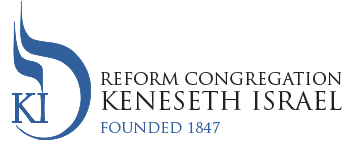This Shabbat, we begin the reading of the fifth book of the Torah, the book of D’varim. Sefer D’varim is very different from the other four Torah books we have read up to now. The time span of this volume is small; Moses begins to speak his three discourses exactly 37 days before he dies. The other Torah books describe time periods much longer. Since Moses himself is retelling the history of the Israelite people up to this point, the book is written largely in the first person, with Moses as both the teacher and the narrator. When we first met Moses in the book of Exodus, he was described as “K’vad Peh,” as possessing “a heaviness of his mouth,” a stammerer. Now, 40 years later, Moses has become a man of words, an orator, and a teacher, an eloquent and frequently indignant and angry messenger of G-d’s revelations to His chosen people.
Moses begins his first discourse by restating his optimistic vision for the future. “Remember G-d said, ‘I have set this land before you, go in and take possession of the land…’ Now G-d, your G-d, has multiplied you and you are now like the stars of heaven in multitude. May G-d add to you another thousand times as many as you are now, and may G-d bless you.” Moses recounts the travels of the Israelites through the desert to the Promised Land. He reminds them that their parents had reached the southern border of Canaan 40 years earlier, but because of the negative report of 10 of the 12 spies, they did not enter the Promised Land. G-d turned the people around and sent them back to the wilderness for forty years of wandering until all the first generation of freed slaves had died.
Now, almost 4 decades later, B’nai Israel are finally ready to enter the Promised Land. Moses carefully tells the Israelites not to cross over the borders of Seir/Edom, Moav, and Amon. These lands were the justified inheritances of the descendants of Esau and Lot, whom we know from their involvement with the Patriarchs in the Book of Bereshit/Genesis.
After being refused entry into the land of Sichon, the Israelites defeat them in battle. Moses instructs all the Israelites to cross the eastern bank of the Jordan River together. Moses tells Joshua, his anointed successor, not to be afraid of the coming battles for conquest of Canaan. Moses tells Joshua, “You have seen with your own eyes all that the Lord your G-d has done to these two kings; so shall the Lord do to all the kingdoms into which you shall cross over. Do not fear them, for it is the Lord your G-d who will battle for you.”(3:21-22)
Our Rabbis and Biblical scholars have understood Sefer D’varim in two distinctly different ways. The traditional and literal view of D’varim is that the book proceeds chronologically after the first four Torah volumes, and we should understand Moses’s three discourses as a suitable and profound conclusion of the entire Torah. Traditional Bible scholars understand the Torah as one cohesive document presenting the history and values of the Jewish people. There is a view of Biblical study that understands D’varim in a different manner. In 622 BCE, hundreds of years after the events described in Numbers, we read in the Book of Kings about the discovery of a new book of the Torah during a renovation of the First Temple started by King Josiah. There is a school of thought that this new book is Sefer D’varim, only recently edited by scribes contemporaneous with King Josiah based on their understanding of the ancient narratives. This view assumes that Sefer D’varim is the most recent book in the Torah, written at a much later date than the first four books.
This Shabbat is called Shabbat Hazon, the Shabbat of “the Vision.” The prescribed Prophetic Haftarah message is from the first chapter of the book of Isaiah. This mournful chapter introduces the observance of the Ninth Day of Av/Tisha B’av. On this 25 hour fast beginning Saturday night, we remember the destruction of the First and Second Temples by the Babylonians and Romans, respectively, the Expulsion of the Jews from Spain, and many other calamitous events that have befallen the Jewish people. Tisha B’av is observed by Jews the world over. Especially at Reform, Conservative, and Orthodox Jewish camps all over the USA, on the Ninth of Av, campers will participate in powerful recollections and dramatizations of the sad events of our past.
Tisha B’Av is followed by a period of comfort and renewal. The first Shabbat after Tisha B’Av is called Shabbat Nahamu, the Shabbat of Comfort. This next period culminates with the High Holy Day season just two months away. This year especially, the comfort and renewal that we are all experiencing as we resume normal interactions following the pandemic and the resultant lockdown are incredibly relevant for all of us. We are all experiencing great comfort and joy as we resume in person services and are able to respond in real time!
On Tuesday evening, August 10, at 7:30 p.m., Shir KI, our outstanding volunteer choir, will begin reviewing our glorious High Holy Day repertoire that we shall sing LIVE during the coming High Holy Day season! Please join us as we sing in person!
Ellen, Avrum, Rabbi Howard and Naomi, Alana, and our grandchildren Micah Toby and Sophie Daniela join me in wishing you Shabbat Shalom U’m’vorach.
